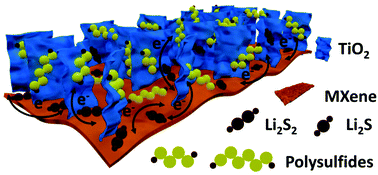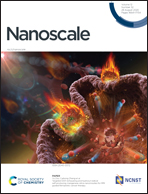Rational design of MXene@TiO2 nanoarray enabling dual lithium polysulfide chemisorption towards high-performance lithium–sulfur batteries†
Abstract
Lithium–sulfur (Li–S) batteries face a few vital issues, including poor conductivity, severe volume expansion/contraction, and especially the detrimental shuttle effect during the long-term electrochemical process. Herein, we designed a hierarchical MXene@TiO2 nanoarray via in situ solvothermal strategies followed by heat treatment. The MXene@TiO2 heterostructure achieves superior charge transfer and sulfur encapsulation. Based on the polar–polar and Lewis acid–base mechanism, the robust dual chemisorption capability to trap polysulfides can be synergistically realized through the intense polarity of TiO2 and the abundant acid metal sites of MXene. Hence, the MXene@TiO2 nanoarray as a sulfur host retains a substantially stable discharge capacity of 612.7 mA h g−1 after 500 cycles at a rate of 2 C, which represents a low fading rate of 0.058% per cycle.

- This article is part of the themed collections: Advanced Nanomaterials for Energy Conversion and Storage, 2020 Nanoscale HOT Article Collection and Nanoscale Most Popular 2020 Articles


 Please wait while we load your content...
Please wait while we load your content...